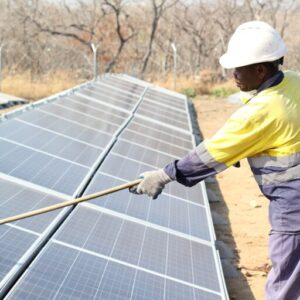Africa’s energy future hangs in the balance: soaring demand meets investment shortfall as continent races toward clean power

Africa stands at a critical crossroads in its energy journey, according to the International Energy Agency’s World Energy Outlook 2025 released in November. While the continent is experiencing unprecedented growth in renewable energy capacity, a stark reality persists: 600 million Africans still lack access to electricity, and millions more endure frequent power outages.
The numbers paint a picture of both promise and challenge. Africa’s population is growing at twice the global rate, driving energy demand that’s expected to surge by more than 50% by 2040. Yet the average African uses just one-sixth the electricity of the global average, creating a massive gap between energy generation and actual access. The IEA warns this disparity could trap entire communities and businesses in cycles of energy poverty without significant policy reforms and investment.
On the bright side, Africa’s renewable energy sector is among the world’s most dynamic. Solar power alone is projected to account for nearly 40% of new electricity capacity over the next decade, with North Africa, Kenya, and Namibia emerging as clean energy powerhouses. The continent is expanding its solar and wind capacity faster than ever before, offering hope for a sustainable energy future.
However, fossil fuels still dominate Africa’s energy mix, and the IEA cautions that continued fossil fuel expansion could undermine renewable progress. The key challenge lies in ensuring adequate funding reaches these promising clean energy projects. Additionally, Africa’s vast reserves of critical minerals essential for renewable technologies—particularly in countries like the Democratic Republic of Congo—position the continent as a potential global leader in the clean energy supply chain, provided investment barriers can be overcome.
This article was written by the EnviroLink Editors as a summary of an article from: Mongabay







